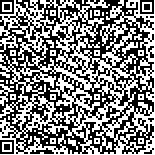| 摘要: |
| [摘要] 目的 分析新型冠状病毒肺炎(coronavirus disease 2019,COVID-19)的临床及CT影像学特征。方法 回顾性分析2020-01-20~2020-03-12该院收治的61例COVID-19患者的流行病学史、实验室检查及胸部CT影像学特征。结果 61例患者中有49例(80.33%)有湖北地区短暂居住史,7例(11.48%)未去外地,但有密切接触史;5例(8.20%)发病前未去过疫区但有乘坐高铁或飞机等交通运输工具史。患者主要临床表现为发热、咳嗽,有6例患者无任何症状表现。实验室检验结果显示,61例患者的白细胞、淋巴细胞、丙氨酸氨基转移酶(ALT)、门冬氨酸氨基转移酶(AST)、肌酸激酶(CK)、乳酸脱氢酶(LD)水平多表现为正常,而hs-CRP水平以升高为主。COVID-19病灶可分布于任何肺叶,早期可仅在一个肺段或肺叶出现,但也可在两肺多发。典型者的肺部病灶位于肺叶的中、外带长轴与胸壁平行分布,CT影像学表现以磨玻璃影、铺路石征、空气支气管征、血管束增粗为主要特征,进展期可表现为肺实变。45例(73.77%)患者在治疗3 d后肺部病变开始逐步吸收消散,16例(26.23%)在治疗后第2次复查胸部CT显示病灶较前不同程度增多,在第3次和(或)第4次复查CT时病灶逐步吸收消散。在病灶吸收过程中,磨玻璃影、部分斑片实变影密度变淡,范围减少。23例(37.70%)后期肺内病灶吸收演变为纤维条索影,6例(9.83%)小叶间隔增厚,11例(18.03%)胸膜下弧线影,1例(1.63%)右肺中叶及左肺上叶舌段支扩,5例(8.20%)胸膜增厚粘连,3例(4.92%)完全吸收。结论 CT影像学检查对COVID-19的诊断及转归评估具有重要的价值,可为临床治疗提供支持与参考。 |
| 关键词: 新型冠状病毒肺炎 影像学检查 实验室检查 疗效 |
| DOI:10.3969/j.issn.1674-3806.2020.09.17 |
| 分类号:R 563.1+9 |
| 基金项目: |
|
| Analysis of clinical and computed tomography imaging characteristics of coronavirus disease 2019 |
|
ZHANG Xiao-ping, XU Jing, XU Ming-yue, et al.
|
|
Department of Radiology, Zhongshan Second People′s Hospital, Guangdong 528447, China
|
| Abstract: |
| [Abstract] Objective To analyze the clinical and computed tomography(CT) imaging characteristics of coronavirus disease 2019(COVID-19). Methods The epidemiological history, laboratory examination, chest CT imaging characteristics of 61 COVID-19 patients admitted to our hospital from January 20, 2020 to March 12, 2020 were retrospectively analyzed. Results Among the 61 cases, 49 cases(80.33%) had a short history of residence in Hubei area, and 7 cases(11.48%) did not travel to other places, but had a history of close contact; 5 cases(8.20%) had not been to the epidemic area before the onset of the disease, but had a history of taking high-speed train or aircraft and other means of transportation. The main clinical manifestations of the patients were fever and cough, and 6 patients had no any symptoms. Laboratory test results showed that the levels of leukocytes, lymphocytes, alanine aminotransferase(ALT), aspartate aminotransferase(AST), creatine kinase(CK) and lactate dehydrogenase(LD) in the 61 patients were mostly normal, while the level of hypersensitive C-reactive protein(hs-CRP) was mainly increased. COVID-19 lesions could be found in any lung lobe. In the early stage, they could only appear in one lung segment or lobe, but they could also occur in both lungs. The typical pulmonary lesions were located in the middle and outer long axis of the lung lobes parallel to the chest wall. The CT imaging features were mainly ground glass opacity, paving stone signs, air bronchial signs, and vascular bundle thickening change. Lung consolidation might be seen in the progressive stage. After 3 days of treatment, the pulmonary lesions were gradually absorbed and dissipated in 45 cases(73.77%). Sixteen cases(26.23%) were reexamined for the second time after treatment using chest CT, and the results showed that the lesions increased to different degrees in the patients, however these lesions were gradually absorbed and dissipated when the patients were reexamined for the third and(or) for the fourth time after treatment using chest CT. In the process of focal absorption, the ground glass opacity and some patchy consolidation shadows became lighter and smaller. Twenty-three cases(37.70%) developed lung fibrous cord shadows in late lung absorption; six cases(9.83%) had thickened pulmonary lobular septa; eleven cases(18.03%) had subpleural arc shadows; one case(1.63%) had bronchiectasis in the middle lobe of the right lung and the lingual segment of upper lobe of the left lung; five cases(8.20%) had thickened pleural adhesions, and the pulmonary lesions were completely absorbed in 3 cases(4.92%). Conclusion CT imaging examination is of great value in the diagnosis and prognosis evaluation of COVID-19, and provides support and reference for clinical treatment. |
| Key words: Coronavirus disease 2019(COVID-19) Imaging examination Laboratory examination Curative effect |

